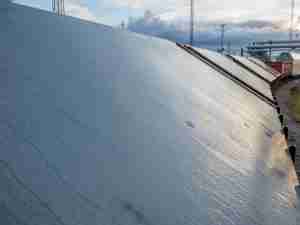Indian Prime Minister Narendra Modi’s budget sought to look beyond the government’s move to invalidate 86 percent of the nation’s cash and focus on growth by spurring consumption and adding jobs.
Billions of dollars of spending on roads, housing, railways and the rural economy have been pegged to achieve his target. Finance Minister Arun Jaitley in the federal budget presented on Wednesday identified textiles, leather and tourism as sectors that will increase employment and promised spending to train workers in the industries.
Jaitley proposed to amend and simplify the nation’s labor laws aimed at boosting manufacturing, while also raising allocations for a guaranteed rural jobs program and irrigation fund. The total infrastructure allocation for the 2018 financial year was proposed at 3.96 trillion rupees ($58.6 billion), including 640 billion rupees on building highways.
Key points from the budget:
- The government will now shrink the budget deficit to 3 percent of GDP in the year through March 2019 instead of 2018
- Government to inject 100 billion rupees into state-run banks, compared with the 250 billion rupees set aside in the last budget
- Plans tax relief for overseas investors in some bonds
- To cut tax on LNG imports to 2.5 percent from 5 percent to promote gas usage
- Government plans to amend rules on drugs and cosmetics to lower drug costs, ensure use of generics
- Eases long-term capital gains tax for property
- Plans to cut tax rate for small and medium enterprises to 25 percent from 30 percent
India Inc.’s view on the budget
“Almost half the budget is dedicated to rural areas, which should certainly have consumption growth happening in the rural areas,” said M S Unnikrishnan, managing director of Thermax Ltd. “Should be good for consumption oriented industries like automobiles, beverages, textiles. All of them should do better.”
The “metro policy for India will create more jobs and help standardization of metro systems in India,” said Harsh Dhingra, India’s chief country representative at Bombardier Transportation. It’s “a win-win for the industry and rail transportation sector.”
“Overall investment-pro strategy of the finance minister is going to be beneficial, both to the rural India as well as to boost infrastructure,” said Amritanshu Khaitan, managing director of Eveready Industries Ltd. “Rural electrification will be positive for Eveready’s growth in lighting. I think the thrust on electrification will help our LED business grow.”
“The government have put in all the required ingredients to incentivize urban decongestion and the development of new industrial cities around our industrial transport corridors,” said Joe Verghese, managing director at consulting firm Colliers International India. “Granting infrastructure status to affordable housing will provide a boost in volume of construction activity across the country.”
“It is a budget, I would say, designed for job creation and creating investment because 96 percent of organized sector is small and medium,” said Sumit Mazumdar, chairman and managing director of Tractors India Ltd.
“The budget strikes a positive tone overall, with the government doing a fine act of sticking to fiscal consolidation while focusing on key initiatives like agriculture and infrastructure spending,” said Priyanka Kishore, Lead Asia Economist at Oxford Economics, Singapore.
On the government dismantling the Foreign Investment Promotion Board, the reactions were unequivocal. “Given most sectors are under automatic route, FIPB was losing its significance,” said Aakash Choubey, partner at law firm Khaitan & Co. “Move to abolish it is positive and may give a fillip to FDI, but a lot will depend on a consistent roadmap that government should lay down.”
Moody’s Investors Service said in a statement that India’s budget marked a continuation of fiscal prudence. The ratings company expects the deficit targets to be achieved, although there will be limited room for slippage.






